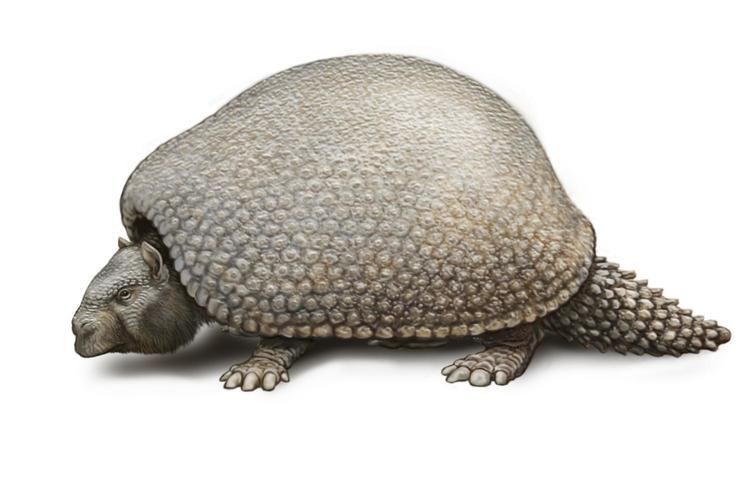Kingdom Animalia Order Cingulata Higher classification Armadillo | Phylum Chordata Scientific name Glyptodontidae Rank Family | |
 | ||
Subfamily †Glyptodontinae
Burmeister 1879 Lower classifications Glyptodon, Doedicurus clavicaudatus | ||
Glyptodont meaning
Glyptodontinae (glyptodonts or glyptodontines) are an extinct subfamily of large, heavily armored armadillos which developed in South American and also populated areas of North America.
Contents
Evolution
Glyptodonts first evolved during the Miocene in South America, which remained their center of species diversity. For example, an Early Miocene glyptodont with many primitive features, when compared to other species, Parapropalaehoplophorus septentrionalis, was discovered at a now-elevated site in Chile and described in 2007. When the Isthmus of Panama formed about three million years ago, several species, such as Glyptotherium texanum, spread north as part of the Great American Interchange, as did pampatheres and armadillos.
Description
Glyptodonts possessed a tortoise-like body armour, made of bony deposits in their skin called osteoderms or scutes. Each species of glyptodont had a unique osteoderm pattern and shell type. With this protection, they were armored like turtles; glyptodonts could not withdraw their heads, but their armoured skin formed a bony cap on the top of their skull. Even glyptodont tails had a ring of bones for protection. Doedicurus possessed a large mace-like spiked tail that it would have used to defend itself from predators and, possibly, other Doedicurus. Glyptodonts also had size on their side; many, such as the type genus, Glyptodon, were the size of modern automobiles. The presence of such heavy defenses suggests they were prey of a large, effective predator. At the time that glyptodonts evolved, the apex predators in the island continent of South America were phorusrhacids, a family of giant flightless carnivorous birds.
In physical appearance, glyptodonts superficially resembled the much earlier dinosaurian ankylosaurs and, to a lesser degree, the recently extinct giant meiolaniid turtles of Australia. These are examples of the convergent evolution of unrelated lineages into similar forms. Glyptodonts could weigh up to a 2,000 kilograms before their disappearance at the end of the last ice age.
Behaviour
Glyptodonts were grazing herbivores. Like many other xenarthrans, they had no incisor or canine teeth, but had a number of cheek teeth that would have been able to grind up tough vegetation, such as grasses. They also had distinctively deep jaws, with large downward bony projections that would have anchored their powerful chewing muscles.
Extinction
Glyptodonts became extinct at the end of the last ice age along with a large number of other megafaunal species, including pampatheres, the giant ground sloths, and the Macrauchenia. Their much smaller, more lightly armored and flexible armadillo relatives survived. The extinction of the glyptodonts coincided with the arrival of early humans in the Americas. Archeological evidence suggests that these humans made use of the animal's armored shells.
